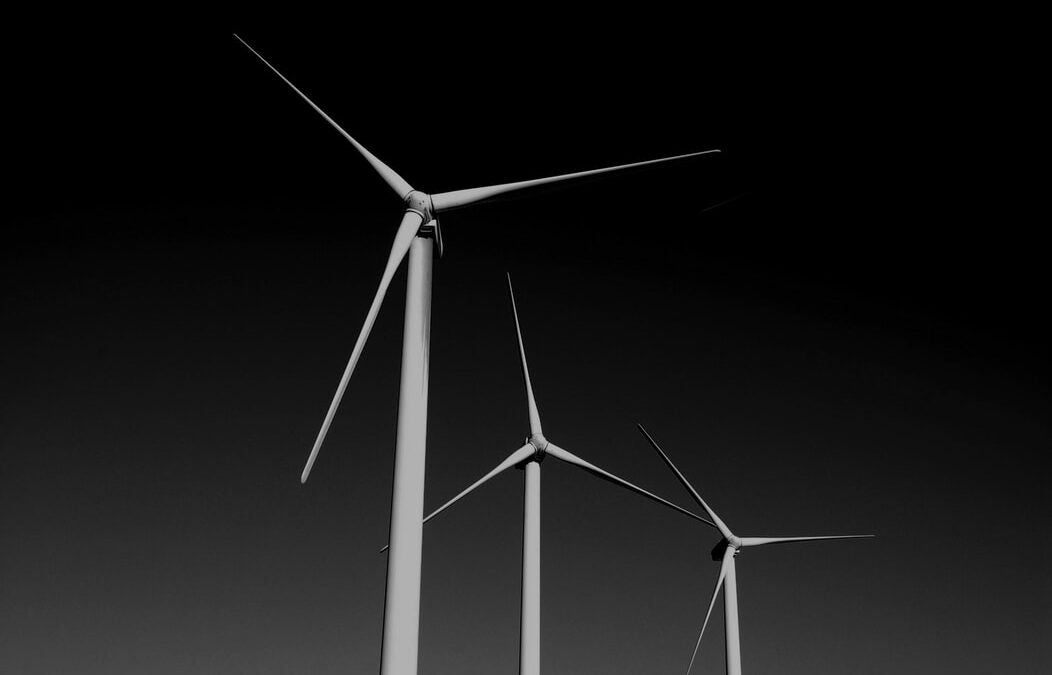It’s estimated that Global hydrogen production will double by 2030 due to sustainability targets. The abundance of RES in the UK means that we are primed to scale hydrogen technology solutions and infrastructure.
Whilst there’s no formal agreement in place (solely on Hydrogen), in September the House of Lords confirmed that a national Hydrogen Strategy will be created before COP26. The pressure follows announcements from a series of governments worldwide green-lighting Hydrogen investment for adoption in energy source strategies, primarily within the industry and transport sectors.
Hydrogen’s potential as an alternative energy source is being increasingly recognised, especially as more pollution-heavy industries make it their mission to decarbonise.
Johnson Matthey, a global science and chemicals company, has recently joined the Hydrogen Taskforce. Set up to pressure the UK Government into committing £1bn towards hydrogen projects and developing 100 hydrogen stations in the UK by 2025, this cross-industry coalition also counts Cadent, ITM, Shell, BP, DBD (and more) among its members.
Most recently, France vowed to achieve a hydrogen production capacity of 6.5 gigawatts (electrolyser capacity) by 2030, investing 7.2 billion euros in the process. The targets are an impressive 10% zero-carbon hydrogen adoption for industry by 2023 and 40% by 2028. France’s strategy for production surpasses that of its neighbour Germany. Germany aims to achieve a hydrogen production capacity of 5 gigawatts by 2030; however, the Government has allocated a much larger spend of 9 billion euros to the project.
Furthermore, in Germany, BP has announced that from 2024 it will use renewable energy, generated by Ørsted’s North Sea wind farms, splitting water into hydrogen and oxygen at their Lingen refinery. On-site will be an industrial-scale electrolyser with an initial capacity of 50 megawatts; this which produces enough clean gas to replace one-fifth of the refinery’s existing hydrogen demand, currently dependent on fossil fuels. It is the oil giant’s first venture into the Green Hydrogen market.
Both the French and German plans were unveiled alongside larger-scale economic stimulus packages which, were brought into motion to boost the respective economies following the disruption caused by the pandemic. Many strategists, politicians, campaigners and scientists in the UK have identified the ‘Green Revolution’ as a crucial element of a potential post-COVID recovery.
We must use the same extraordinary powers of invention to repair the economic damage from Covid-19, and to build back better. Now is the time to plan for a green recovery with high-skilled jobs that give people the satisfaction of knowing they are helping to make the country cleaner, greener and more beautiful
– Boris Johnson
Prime Minister Boris Johnson has noted that the UK is ‘progressing with gale-force speed on the green economy’. According to a recent report by TechNation, in 2019, the UK received £336m in Venture Capital investment for Net Zero companies, 55% more than France, which received £216m, and 18% more than Germany with £283m.
On the 17th of November, he unveiled a 10-point green plan (see update below), stating “we will turn water into energy with up to £500m of investment in hydrogen” and that the UK will make a “big bet” on Hydrogen production in the future. As estimated by The Economic Impact Assessment by the Hydrogen Taskforce, Hydrogen could be worth as much as £18bn to the UK economy by 2035, generating £320bn for the economy and sustaining 120k jobs by 2050.
Hydrogen Projects are already having an impact throughout the country; one example is HyNet. Based in The North West, the project will boast a 100kNm3/hr hydrogen production capacity and a supply facility by the time of its completion. The HyNet cluster produces hydrogen from natural gas integrated within a CCUS infrastructure.
HyNet is a is a complete system of hydrogen production, hydrogen supply, hydrogen utilisation, carbon capture, transportation, and carbon sequestration located in a concentration of industry, existing technical skill base, and suitable geology
– HyNet North West
Further afield, in the U.S., following Joe Biden’s election win, it’s expected that as part of his ‘Big Green Deal’ proposal that America will place a new emphasis on de-carbonisation. Already a world leader in hydrogen fuel cell technology, the U.S. generates about 11.4 million metric tons of hydrogen per year, with an estimated value of $17.6 billion. However, Green Hydrogen approximately costs around three times the price of natural gas, which within a country with already cheap energy prices, constitutes an economic challenge.
Moreover, Saudi Arabia will become the home of the world’s largest Green Hydrogen-based ammonia production plant costing $5 billion (£3.9bn) to build. It will supply 650 tonnes of hydrogen every day and help save three million tonnes of CO2 each year. The plant is a joint venture project with Air Products & Chemicals (a US industrial gasses company), NEOM, and ACWA Power.
Saudi Arabia announced Neom or, ‘new future’, a smart city innovation initiative costing $500bn (£380bn). Neom is 100% powered by renewable energy and encompasses forward-looking energy storage and transport solutions as well as R&D and manufacturing. However, the city comes with controversy due to the proposed eviction of the Bedouin tribe from their homeland.
The first country to establish a national plan, the Japanese government is also banking on hydrogen-based ammonia production, expanding the Basic Hydrogen Strategy outlined in 2017. Having an energy supply reliant on imports, Japan has announced plans to work toward a “hydrogen society”, hoping to scale its infrastructure and develop strategic global partnerships – one of which being with Saudi Arabia.
At the end of September 2020, Saudi Arabia sent the first shipment of blue ammonia (three parts hydrogen and one part nitrogen) as part of a project between the Institute of Energy Economics, Japan (IEEJ) and Saudi Aramco (in partnership with Saudi Arabian Basic Industries Corp). Despite being a small initial shipment (40 tonnes), the project is a starting point in the development of international hydrogen supply networks, kickstarting Japan’s plan to create a commercial hydrogen fuel supply chain.
However, fervent debates continue to ensue over Hydrogen’s viability.
Whilst many see it as an enabler of Green Hydrogen, European scientists have warned the EU that the climate benefits of Blue Hydrogen from fossil fuels are “limited” even if decreased by CCS – carbon capture and storage. According to the Chief Executive of leading electrolyser manufacturer ITM Power, Graham Cooley, Blue Hydrogen projects are a dangerous proposition and no substitute for Green Hydrogen solutions. Blue Hydrogen, he says, requires both Methane and CO2 pipelines, the former being especially expensive and prone to leakage.
Also highlighted as a problem regarding Green Hydrogen are the issues of expense and waste. Critics have levelled water purification and storage as a factor posing a logistical issue. Twenty tons of water (approximate) are required to produce every one ton of hydrogen to make up for losses (through electrolysis).
Despite this, with the correct infrastructure, investment, and the continued commitment from governments to explore technology, we look to be transitioning to a low carbon-based energy supply on a global scale in the future. And, it appears Hydrogen will play a large role in this greener reality.
**UPDATE**
On Wednesday 17th November, PM Boris Johnson announced his 10-point green plan which is estimated to create 250,000 jobs (focused primarily in the north of England, Midlands, Scotland and Wales).
According to Johnson, the UK is preparing to make a “big bet” on hydrogen production, with the promise of a town heated entirely by hydrogen by the end of the decade. In Point 2, he details “we will turn water into energy with up to £500m of investment in hydrogen”.
Imagine Britain when a Green Industrial Revolution has helped to level up the country. You cook breakfast using hydrogen power before getting in your electric car, having charged it overnight from batteries made in the Midlands. Around you the air is cleaner; trucks, trains, ships and planes run on hydrogen or synthetic fuel
– Boris Johnson
Read more: https://www.ft.com/content/6c112691-fa2f-491a-85b2-b03fc2e38a30
References:
Research from Frost & Sullivan, predicting rises from 71 million tonnes of Hydrogen to 168 million by 2030. https://ww2.frost.com/news/press-releases/hydrogen-production-to-double-by-2030-as-the-world-advances-towards-a-sustainable-energy-economy/
https://technation.io/net-zero-report/
More about HyNet:
Our Utilities practice specialism is led by Andy Rogers. The Insight Engineering team can support you across a breadth of Power Generation projects such as diverse Renewables including; Hydrogen, Wind, Solar, Biomass, Energy from Waste, CHP & District Heating Schemes, to Transmission & Distribution upgrades, DNO & IDNO connections, HVDC connector & cabling projects along with critical National Infrastructure Security.
Andy Rogers is a specialist recruiter in mid to senior-level Operations and Commercial appointments within T&D/ Utilities. If you would be interested in more information, please email a.rogers@insight-rec.com
See More From Our Blog
Meet Our New Mission Critical Team Member – Jacob Jackson
Here at Insight Recruitment, we’re excited to further expand and strengthen our Mission Critical team. Jacob Jackson joins the Insight family in the position of Recruitment Consultant specialising in the Mechanical industry…
read moreIndustry Update – The Evolution of the Data Centre Market in Europe
In today’s digital age, data centres serve as the backbone of our interconnected world. They are the central hubs powering the storage, processing, and distribution of vast amounts of information…
read moreIndustry Update – Technology Innovations in the US
In today’s ever-evolving world, the United States continues to be at the forefront of technological innovations, shaping industries and driving global progress…
read moreMeet Our New US Tech Team member – Joe Flower
Here at Insight Recruitment, we’re excited to further grow our US Tech team as we aim to explore new markets…
read moreMeet Our New Mission Critical Team Member – Georgia
Here at Insight Recruitment, we’re excited to further expand and strengthen our Engineering team. Georgia Ellyatt joins the Insight family in the position of Recruitment Consultant specialising in the Mechanical & Electrical industry.
read moreMeet Our New Operations Team Member – Anna Prudencio
Here at Insight Recruitment, we’re excited to further grow our Operations team as we aim to Empower Sustainable Growth…
read more








Recent Comments